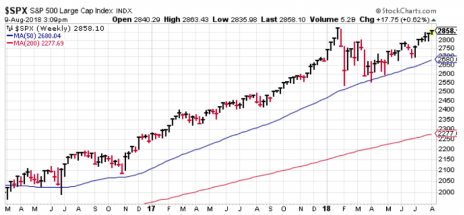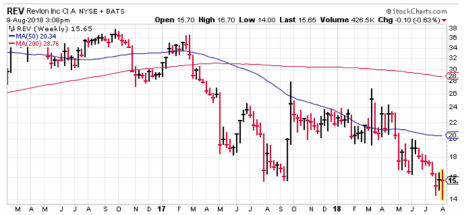The following is an email that I received from a longtime subscriber early in July.
“I wonder if other subscribers to Cabot letters are getting exposed to the thought of a market collapse this fall. Things on seekingalpha, Yahoo, youtube, etc all have articles hinting at something. Many of the articles worry about the dollar losing its reserve currency status and a new IMF-type agency rising using a basket of currencies as a reserve.”
Kurt
I answered Kurt directly, but I want to share my answer (expanded and modified for all my readers), because I think this is important.
First, I’ll admit that it’s not my habit to spend time on any of those sites exploring those market predictions, so I have no direct knowledge of what Kurt has been reading and watching.
And I can’t say that his letter will change my habits.
Market Predictions are Mostly Negative ... and Wrong!
But I will say this.
In the decades that I’ve been at Cabot, I’ve seen more predictions of trouble than I can remember, and none of them have come true!
[text_ad]
And of the two big troubles that have come along—the bear market after the 2000 dotcom top and the bear market after the 2007 top—neither was predicted. Both times, people were too busy enjoying the good times to imagine that trouble might lie ahead.
Now, I will admit that there was a time when I grew concerned about one fundamental problem. I read a book about the coming of Peak Oil, the point where the amount of oil taken from the earth every year would exceed our ability to find new oil—and thus set off an unstoppable climb in the price of oil. And I believed it.
But Peak Oil never happened. Fracking happened. And the next thing you know, U.S. wells were producing so much oil and natural gas that we became an energy exporter!
Instead of less energy, we had more energy. And no one saw that coming!
Since then, I’ve taken predictions of trouble with a grain of salt, because I’ve learned that problems tend to be solved.
But I’m not the first person to figure that out.
“If you see ten troubles coming down the road, you can be sure that nine will run into the ditch before they reach you.”
Calvin Coolidge
Furthermore, I’ve learned that some people are permanently pessimistic; in the investing world, we call them perma-bears. And if you listened to those people you’d have spent the past decade out of the market, having converted your assets to gold or rice or toothpaste—or something.
So one way to check to see whether those people on Seeking Alpha and Yahoo and YouTube might be worth listening to is to see if they’ve ever predicted anything positive, like the S&P posting positive returns in every one of the past nine years.
If not, I say ignore them.
Instead, focus on the oracles that truly matter, which are the charts of the stocks you own today, or would like to own tomorrow.
The stock charts are the very best predictors of what’s around the corner because they consider and weigh all the perceptions of all the investors who actually have an interest in those stocks—who put their money where their mouth is—and you can see in an instant whether perceptions are improving or deteriorating.
And the charts will never steer you wrong for long.
This is good.
This is bad.
It’s not that difficult.
So if you simply focus on owning good stocks, and ignore the pessimistic chatter on all those free internet sites, my conviction is that you’ll not only have better investment results, you may also become a little less pessimistic about what’s around the corner in general.
Now, is it possible that Kurt has uncovered something with these dire market predictions, and there really will be a major economic collapse this fall triggered by some kind of currency shift?
Certainly it’s possible.
SURPRISE!
But here’s a surprise.
The email above was written not in July 2018 but in July 2017. And as you well know, there were no fundamental shocks from currencies or other economic factors that Fall—or since, for that matter.
Which is not to say that they can’t happen—certainly they can—but simply that it’s foolish to invest (or not invest) based on such market predictions.
The most successful investors are those who invest on the long side most of the time, who reduce risk when the market becomes unsupportive, and who avoid preconceived notions about what is going to happen. And that’s what I do in my Cabot Stock of the Week every week, with very good results for my readers.
As I write, my portfolio has 19 stocks in it. The biggest loss in the entire portfolio is just 10%, while the average return across all the positions is a profit of 91%.
To learn more about Cabot Stock of the Week, click here.
[author_ad]




